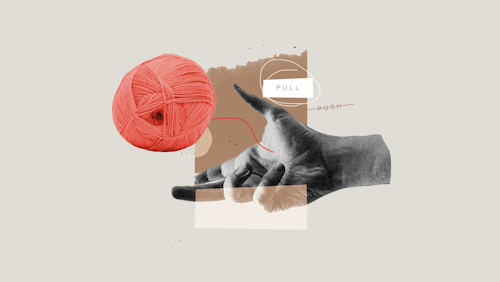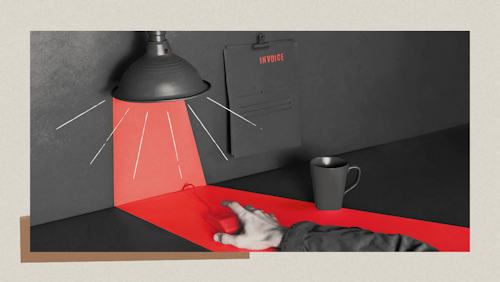Processes
How to Build Your Branding Project Team to Get Things Done

Over the years we’ve worked with hundreds of clients on their brands, and learned a lot about what makes great project teams. Great project teams lead to enjoyable projects, yes, but also to greater project success. And project success translates to greater brand traction and, ultimately, our clients’ success.
At Focus Lab, as a team of senior-level specialists, we choose each project team very deliberately, calling together members based on their particular strengths and expertise. By doing so, we know we have not only the subject matter experts needed, but also the soft skills to be a highly effective working group.
And in our years, we’ve learned a thing or three about what makes the most successful client project teams, for organizations large and small, across a variety of project types. And we’ve come to know that both the client’s team and our own are critical to a project’s success.
Read on to find out what we’ve learned, and get some best practices for crafting your own effective, winning project teams.
Team Size
We’ll start with the easy one: the number of people that can be reasonably expected to work together cohesively to reach a set of outcomes.
At first, it seems simple enough: Is it easier to reach consensus in a group of three, or a group of 12? Is a team more agile and cohesive if it has four members, or 10?
So yes, conversations, meetings, collaboration, decisions…they’re all much more straightforward in a smaller group than a larger one.
When working with an agency such as ours, who expects a true partnership, we expect that your team is able to dig in with us, to dedicate time to meetings and feedback each week, to provide feedback in a unified voice, and to act as a unit, dedicated to the cause of furthering your brand alongside our efforts. The more nimble this core project team, the better able we all are to remain focused, available, and consistently effective. The sweet spot for this core project team is 1-4. More than 4, and inter-team communication and collaboration becomes unwieldy.
From this description, you probably already know this isn’t just a “project team.” This is a super team of power players. You want the folks who can get sh*t done, speak up when they see something amiss, collaborate, and commit to seeing the project through to its very exciting and transformative end.
And while we need to identify a core project team, we don’t discount other stakeholders; more about that in the next section.
The numbers, however, aren’t the full story…what matters just as much is choosing the right people.
Team Makeup
This is where things start to get tricky.
You may know exactly who you want to have involved. You might even, in the case of a smaller company, have just a single individual on your project team. But if you’re figuring it out for core project teams of more than one or two, we suggest the following:
1. Make target team size known. It is common for many people to want to be involved in a project that will affect your brand, and it is also common for there to seem to be many reasons to have them involved. But as we learned above, more people doesn’t mean better outcomes. And the more you can communicate that a small team is needed, and that you have guidelines for choosing its members and getting stakeholder input, the more people will feel comfortable that their wishes are represented.
2. Identify a single Project Lead. This is the person, one individual, who has the ability and capacity to run point for every interaction with our team for the duration of the project. They will be responsible for internally managing your project team and consolidating any of your team’s feedback before delivering it to us. They will be most successful if they are tactful and highly organized, and may be a project manager within your organization. In a DACI framework (a responsibility and decision-making model), this person is the Driver.
3. Identify a single Decider. Sometimes the same person as your Project Lead, this is someone empowered to make decisions on behalf of your company when it comes to brand and project matters, or who can get any needed approvals with ease. They are trusted within the organization, feel confident navigating internal politics, and have a track record of bringing visionary ideas to life within the organization. They are also able to resolve conflict internal to the core project team and are confident making decisions when the team is undecided or needs direction, not needing to rely on consensus. They will be most successful if they are both diplomatic and pragmatic. This person is often a Founder, CEO, VP of Brand, or CMO. In a DACI framework, this person is the Approver.
Assuming that your Project Lead and Decider are the same person:
4. Choose your next one to three team core team members deliberately. In a DACI, these people are Contributors. The people selected should be able to think big-picture about your brand, and have the ability to envision the brand’s future applications.
For most brand or interactive projects, we recommend, in order of importance:
- Marketing representation. Often the CMO, this is someone who is a big-picture thinker, has a deep understanding of your product or service, and is close to how your brand is and will be communicated. We’ve occasionally, in the case of smaller companies, seen this be an executive leader.
- Design representation. Often a Creative Director or VP of Design, this is someone who has a deep understanding of your brand’s creative history, and is experienced in creating and critiquing creative work at a visionary level. Very importantly, it is also someone who understands the current gaps in your business and how the work we will do might fill those (i.e., the specific needs that could/should be solved).
For projects with significant communications components, you may choose to include:
- Marketing or other communications/writing representation. This can be the same person as the marketing representation or as the Decider, and should be someone keen to the powers of words and messaging, and comfortable with written deliverables and wordsmithing.
For any project, you might also consider:
- Customer representation. Often someone in sales or customer service, but possibly someone already on your core team, this is someone who has on-the-ground knowledge of the issues faced by your customers and target audience.
Again, you may not need all of these, or you may have one person that fills multiple roles. That’s totally fine. But these are the top roles to consider. And we still believe strongly that a team of 1-4 is best.
Ask Yourself
If you find yourself unsure or needing more insight, consider these questions:
Who has the time to be in meetings, follow up on tasks, complete homework, and get internal buy-in and approvals?
Who has broad but functional knowledge of the challenge at hand?
Who has or can assume the authority and confidence to make decisions independently, but the humility to know when they don’t know something?
Who can think big-picture about the future of our brand without getting stuck in the weeds?
Who can confidently make decisions, especially when there is no single consensus?
Who is directly involved in the day-to-day operations and impact of the challenge at hand?
Stakeholders
Note stakeholders outside of the team. More for your use than for ours, understanding who else may have interest in your project will be helpful in knowing whose input you may need at various points in the project. It will also help you create a plan for keeping them informed, thereby confirming your ability to bring the project to success with a small core team. In a DACI, these people are Informed.
Other stakeholders to consider:
- Anyone you weren't able to include in your core project team. If keeping your core team to 1-4, left someone out that you feel is important, make them a part of your broader Stakeholder (Informed) group.
- Technology. For larger projects or those that will touch product, it can be helpful to consider the perspective of the person who understands precisely what you build or deliver.
- Finance. For larger projects or those that will touch product, it can be helpful to consider the perspective of the person who knows where and how the money comes and goes.
- Executive. We sometimes see involvement from CEOs, which is often extremely informative from a business and brand strategy and vision perspective. Depending on your organization, its size and its operations, it is sometimes (though certainly not always) necessary to seek executive input or approval for certain key decisions.
- Subject matter experts. It’s sometimes helpful to call on other functional or content area-specific stakeholders to provide content or clarity.
Depending on your team dynamics, you may also find it helpful to communicate ahead of time that not all decisions will be presented at the executive or other level, and to clarify if there’s any particular point that requires other stakeholder input.
We know it’s tempting to try to get everyone’s input and have everyone be happy with each step of a project, but we implore you to resist that temptation. You want your brand to rise above the rest, and it won’t be able to do that if you try to make it be all things to all people.
A note about stakeholder input: You want to lead your team to believe in your brand, to bring them along with you in your crusade. To do that, you will need to guide them — with our help — in the directions that are best for the future of your company. Where you lead, they will follow with confidence and enthusiasm to become ambassadors of your brand. We can provide specific guidance on how to successfully lead an internal roll-out.
Our Teams, Making Magic
Picture it: We bring our A-team and you bring yours. You stand not only to have a successful project, but a successful and resonant brand with complete team buy-in and support for your rollout. And you can do it with just a few key people at the table.
By considering our recommendations above, you can be assured that your team will be fully equipped to engage in a brand project functionally and effectively. By identifying your core voices deliberately, and pairing with our team, you have everything you need to transform your brand, and your company, with relative ease. We know, we’ve seen it happen! And then you can enjoy being the champions of a brand that you and your whole company believe in.
And if you need a little more inspiration, check out these partners whose teams have directly contributed to the impact of their brands:
This blog was updated in January 2024.
Photo by Volodymyr Hryshchenko on Unsplash

